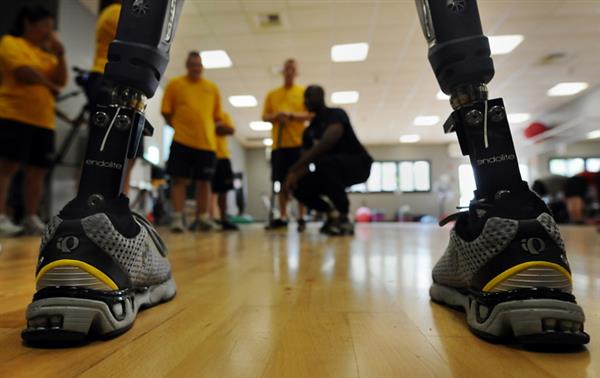With the advent of the 3D printer, many AT “challenges” have arisen around the globe, inviting people with disabilities, engineers, and interested members of the public to create assistive technology solutions for people with disabilities.
This is exciting to see, and, as one of our staff members who was able to participate in an AT challenge recently said, “I wish people with disabilities were behind the making process because we know our own needs better than anyone.”
She is right, of course, and furthermore, because all individuals are different and might have different needs, the fact that AT should be created for an individual rather than mass produced as a whole is a worthwhile goal, that, until recently, was always deemed too expensive.
Will the future generations be making their own individualized AT using 3D printers? This seems likely, the way things are heading.
Well, this Thursday is Veteran’s Day, and what better way to celebrate our veteran heroes than by giving them the AT they need to be independent members of society! We have all heard on the news the concerns that Veterans aren’t always getting the assistance and services – including AT – that they need, but as more challenges like the following are happening, we hope that this will soon be a distant worry of the past.

photo: http://www.3ders.org/articles/20150729-prosthetics-and-assistive-technology-challenge-helps-bring-3d-printed-assistive-devices-to-veterans.html
The VA Innovation Creation Series Prosthetics and Assistive Technology Challenge, occurred this past summer in Palo Alto and Virginia, hosted by the VA Assistive Technology Program and VA Center for Innovation, and was established for the public to contribute towards designing devices and solutions for improving the quality of life and care of military veterans.
The VA wanted participants to be able to get feedback from veterans during the challenge as well as allow veterans to pitch their own ideas and challenges to design teams as well.
To better enable the designers, engineers and makers to easily work through multiple design iterations and concepts, Stratasys donated fourteen 3D printers as well as a team of knowledgeable 3D printing experts to assist participants in bringing their solutions to life during the two-day event.
“The collaboration with Stratasys is critical to accelerate the development of personalized assistive technologies and prosthetics…,” said Andrea Ippolito, Presidential Innovation Fellow for the VA. “At this event, we can co-create and build designs based on each veteran’s unique needs and obtain their feedback in a very agile, tailored pathway.”
To view other AT resources for Veterans go to:
What do you think of the capabilities of these 3D printers and the AT Challenges? Write your comments in the comment box below.




